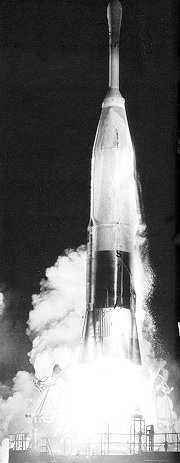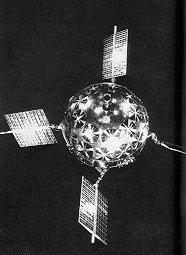
Scouting the Moon
By EDGAR M. CORTRIGHT
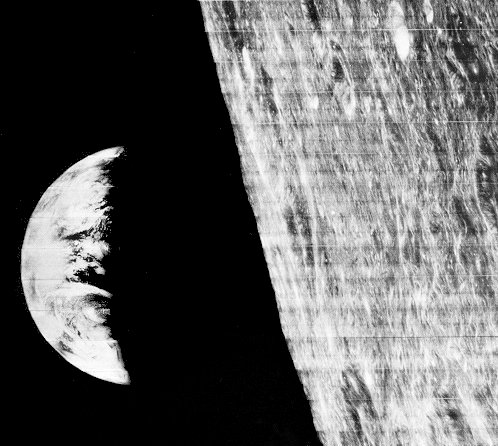
|
| Our first look at Earth rise over the eastern rim of the Moon was radioed back by Lunar Orbiter I on August 23,1966. At the moment this picture was shot, the spacecraft was flying 730 miles above the lunar far side. The photo gave man a disarming view of his own world. But the sweep of tortured lunar surface revealed in the Orbiter pictures was a dramatic preview of the unearthly realm that the Apollo astronauts would soon see. |
After centuries of studying the Moon and its motions, most astronomers faced with diminishing returns - had abandoned it to lovers and poets by the time that Sputnik ushered in the space age. The hardy few who had not been wooed away to greener astronomical pastures were soon to be richly rewarded for their patience.
Before the invention of the telescope in 1608, astronomers had to be content with two good eyes and a fertile imagination to surmise the nature of the lunar surface. As a consequence they mainly devoted themselves to the mathematics of the Moon's motions relative to the Earth and Sun. The early telescopes that first revealed the crater-pocked face of the Moon touched off several centuries of speculation about the lunar surface by scientists and fiction writers alike - it often being unclear who was writing the fiction. But telescopes peering through the turbulent atmosphere of Earth have severe limitations. By 1956 the very best terrestrial telescope images of the Moon were only able to resolve objects about the size of the U.S. Capitol. Anything smaller was a mystery.
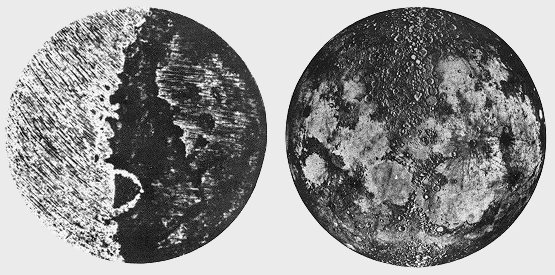
|
| Galileo drew the Moon in 1610 and described its surface as "uneven, rough, replete with cavities and packed with protruding eminences." While a correct description, his details are unrecognizable now. | Harold Urey enhanced our view of the lunar surface by creating this montage made from segments of Lick Observatory photos taken when the Sun angle was low so that shadows emphasized relief. |
So the question remained: What was the lunar surface really like? While few people really believed the Moon to be made of green cheese, many scientific hypotheses cherished not long ago were equally strange and rather more ominous. They included deep fields of dust into which a spacecraft might sink; a labyrinth of "fairy castles" such as children build by dripping wet sand at the beach; electrostatic dust that might spring up and engulf an alien object; and treacherously covered crevasses into which an unwary astronaut might fall. What proved to be the most accurate prediction, however, likened the Moon to a World War I battlefield, bombarded by a rain of meteoroids throughout the millennia, and churned into a wasteland of craters and debris. The absence of an atmosphere and the low gravitational field would allow small secondary particles to be blasted from the surface by a primary meteoroid impact and thrown unimpeded halfway around the Moon. This led to the concept of a uniform blanket of ejecta over the entire Moon.
 
|
| A Juno II launch vehicle was made up of an Army Ballistic Missile Agency's modified Jupiter first stage with a spin-stabilized solid-rocket upper stage developed by the Jet Propulsion Laboratory. JPL also developed the 13.4-lb Pioneer IV payload (right). Launched March 3, 1959, it helped detect and measure the second of the Earth's great radiation belts. |
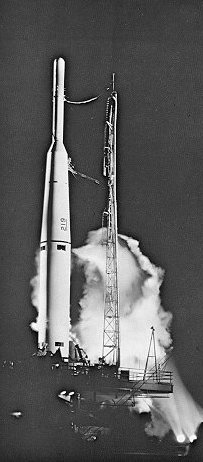 
|
